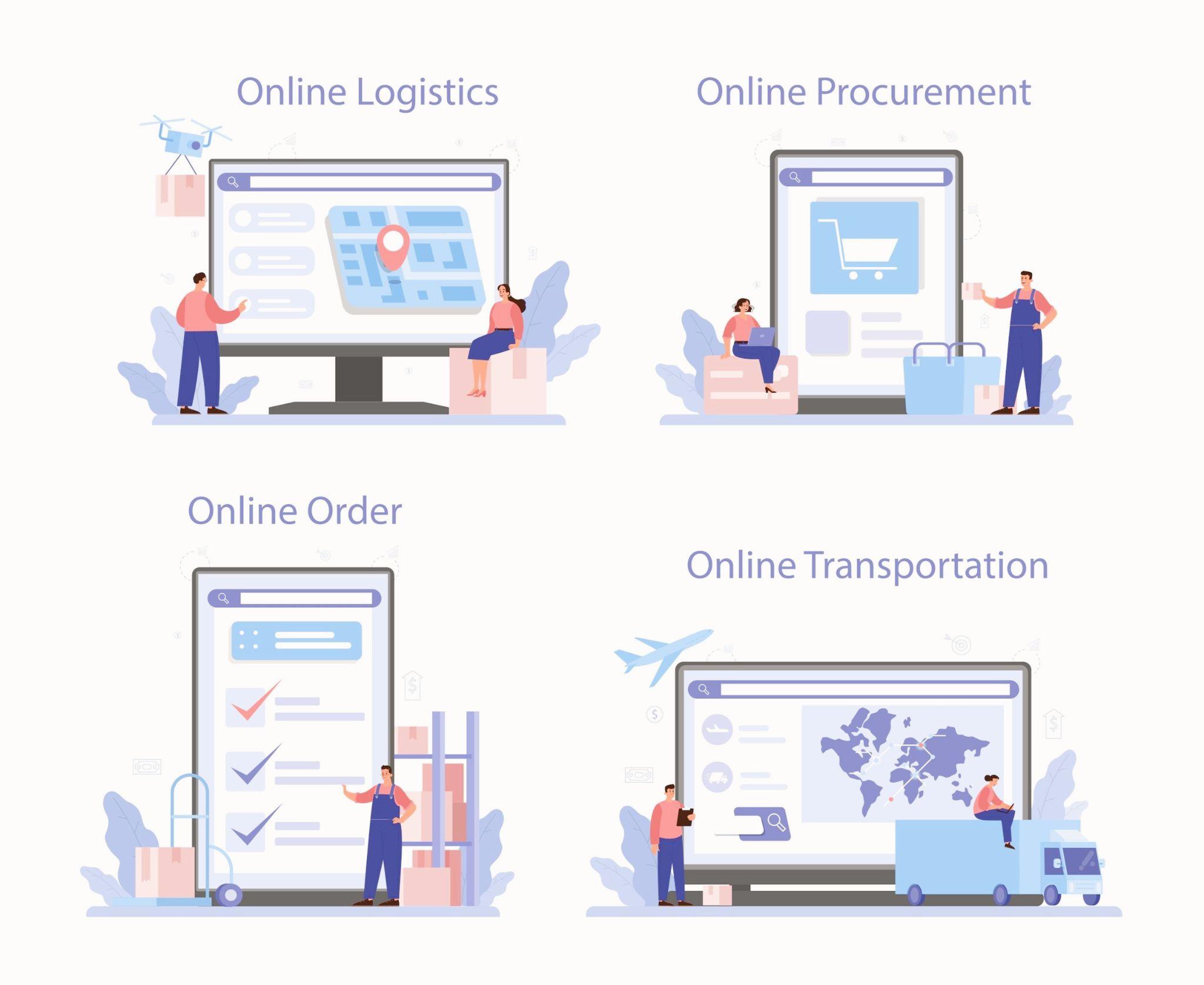
A customer journey map represents your customers’ steps when engaging with your brand. If you’ve ever thought about improving the experience for someone who shops on your site, then you’ve probably considered creating a B2B customer journey map. B2B companies have been using this strategy for years, but lately, there’s been much more talk about it in eCommerce circles. This post will help you understand what customer journey mapping is, why it’s essential, and if you’re ready to start mapping out your business’ customer journeys.
Identify the right issues
Before choosing a strategy, you need to understand the problem and identify issues. Your customer journey mapping goal is to identify these for later analysis.
- Understand the problem: Defining your goal before embarking on any strategy is vital. This will help you evaluate if it is being achieved and how to improve it. For example, suppose your goal is increased profits from B2B customers. In that case, this could be achieved by improving conversion rates or reducing churn rates (the percentage of customers who stop using your product).
- Identify the issues: Once you know your goals for each stage of a user’s journey, you can begin identifying areas where problems may prevent you from achieving them (e.g., inefficient processes that lead to low conversion rates). The key here is identifying issues and understanding which ones matter most so they can be tackled first.
What is a B2B customer journey map?
A customer journey map represents how customers interact with your product or service over time. It details what steps they take to complete their goals and highlights the emotional experience they have along the way. The goal is to identify opportunities for improvement in every step of this process—from initial research through purchasing, use, support, and beyond. With this information, you can better tailor your marketing and sales efforts to improve conversions.
Journey maps help you create an understanding of how customers interact with your brand across channels and touchpoints, including:
- Researching pricing options
- Reading reviews about competitors’ products
- Calling technical support for help setting up new hardware
Why does eCommerce need customer journey mapping?
A customer journey map can be a strategic tool to help you understand how your customers interact with your brand. More importantly, it can help you know how they feel and respond to your brand, which is critical for any business looking for long-term success. According to McKinsey, the B2B journey’s future is a hybrid or remote-first.
The goal of a customer journey map is to create a visual representation of what happens from the time someone first hears about your product or service until they make their purchase decision. This includes everything that matters: product interest, research, trial or demo request, purchase decision process, and post-purchase experience.
What are the different types of customer journey maps?

Depending on the use case, there are different types of customer journey maps:
- B2B (business-to-business) customer journey map: This shows how customers interact with each other and your business in a transaction or interaction that’s not directly related to consumers. A typical example is two business owners negotiating a contract for services or products.
- B2C (business-to-consumer) customer journey map shows how your company interacts with consumers who purchase its product or service. It may include marketing, sales, and support before, during, and after purchase.
- B2C2B (business-to-consumer-to-business): This consists of business customers and external sources such as partners, suppliers, and competitors. The goal of mapping these relationships is to understand how they affect one another when interacting on various touch points like marketing campaigns or product development processes.
However, it would be helpful to utilize actionable insights before you create any of your B2B customer journey maps to ensure the accuracy of your mapping process. Because average consumers want an authentic and distinctive experience, you might consider including so-called contactless experiences in your customer journey.
Map and understand the customer journey, step by step
Customer journey mapping is a process that maps the steps customers take during their interactions with your company, from initial contact to final sale. It shows you where the friction points are and helps you understand how to improve customer experience.
By understanding each step of the customer journey and its purpose, you can guide customers through your website or app in a seamless and intuitive way. You can also use these insights to improve eCommerce strategies by identifying bottlenecks in the checkout process, for example, or by ensuring all channels are communicating effectively including Instagram, Facebook, WhatsApp business, etc.
Once you’ve mapped out your customer journeys, here are some ways to use them:
- Understand how customers interact with each channel (website/app) across different touchpoints (email marketing campaigns etc.). This allows cross-channel coherence within an organization so that everyone is speaking the same language when it comes time for action planning
- Identify opportunities for improvements on any given channel(s). For example: Are there specific areas where users seem frustrated? If so, this may indicate there’s room for improvement — maybe even something as simple as changing the wording on a button could do wonders.
Use design thinking to improve the customer journey

Design thinking is a process that helps you identify and solve problems. It starts by identifying the problem, brainstorming solutions with stakeholders, and finally using design to test and implement those solutions.
Design thinking can help create products or services people want and need. To do this effectively, it’s crucial to understand your customers first—so let’s dive into how to choose a customer journey mapping strategy for B2B businesses.
What are the benefits of B2B customer journey mapping?
Customer journey mapping is a data-driven approach to creating a holistic view of your customers’ experiences.
The benefits of customer journey mapping include:
- Increase lifetime value by improving customer experience software, satisfaction, and loyalty.
- Improve the quality of sales leads and speed up the conversion process. In some cases, it’s even possible to increase revenue per customer or overall revenue thanks to better marketing automation tools that can be used to send targeted offers and promotions based on each stage in the customer journey (e.g., “we noticed you’ve been browsing this product for two weeks — here’s another coupon”).
How does B2B customer journey mapping improve eCommerce?
Customer journey mapping can be used to improve eCommerce in various ways. Mapping out your customer’s experience with your company helps you identify areas for improvement that may not have been obvious before.
For example: If a map shows that customers are having difficulty finding the right product on your site, it could be because the navigation or organization isn’t intuitive enough. That could mean rethinking how you display products or making sure they’re easy to search through.
Another example: If customers aren’t finding what they want, it might mean that search features need more work (or even completely overhauled). This is an area where B2B companies can benefit from their expertise in SEO—they already know how important it is for people to be able to find exactly what they’re looking for when they visit your site.
The point here is that customer journey mapping gives insight into how well you’ve created an experience tailored specifically around each type of buyer persona, which means there’s plenty more room for improvement.
What is the difference between B2C and B2B customer journey mapping?

Regarding B2B customer journey mapping, there are several key differences between the two types of customers. First, B2B customers tend to be more complex. They have longer sales cycles and require more information from you before buying your product or service. Second, because they’re repeat buyers who know exactly what they want, B2B customers are also likely to be loyal—they’ll come back again and again.
Thirdly (and this may seem obvious), when we’re talking about business-to-business relationships rather than business-to-consumer ones, the people involved in those relationships tend to be not only employees but also influencers: decision-makers who could sway other employees into following their lead on specific deals or purchases. Finally, while pricing is still critical for B2B businesses as well as B2C ones (after all, if something isn’t worth paying for at first glance, then why would anyone bother?).
These companies aren’t just looking for a low price tag; they care about what the product does and how effective it will work out in practice—in other words: Functionality.
Customer journey mapping can help you understand how your B2B customers interact with your brand.
Customer journey mapping can help you understand how your B2B customers interact with your brand. It’s a process that allows you to visualize the customers’ path through the customer lifecycle and identify friction points and improvement opportunities.
Customer journey mapping is a technique that helps you uncover what problems your B2B customers are trying to solve through your product, then enables you to find ways to improve their experience by making those problems more straightforward or more efficient for them. To do this effectively, however, it’s essential that you understand the basics of customer journey mapping and how it works for eCommerce companies specifically. For example, if you have a lot of international customers, having a second phone number would be beneficial. You could have a toll-free number for non-American customers and a local number for American buyers.
In a nutshell
Customer journey mapping is essential for any business but precious for eCommerce. It lets you understand how your customers interact with your brand, which can help improve customer experience and sales conversion rates. B2B customer journey mapping is a strategic approach that considers the entire customer experience, from initial contact to purchase. This map will help you identify areas where improvements are needed to create better experiences overall.
- How AI is Impacting Our Daily Activities - August 21, 2023
- Visualizing Your Data: Utilizing AI-Powered Word Clouds For Data Analysis - March 9, 2023
- AI-Powered Survey Analysis: How to Get More Value from Your Data - March 8, 2023




